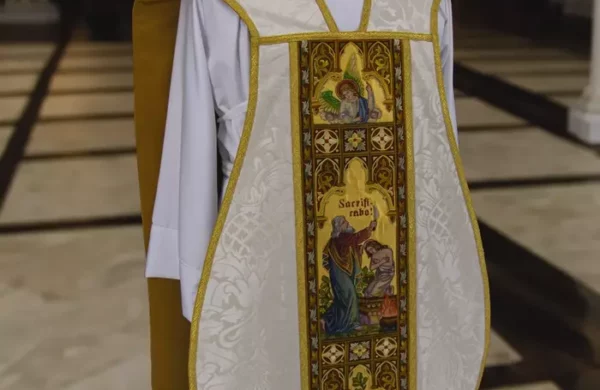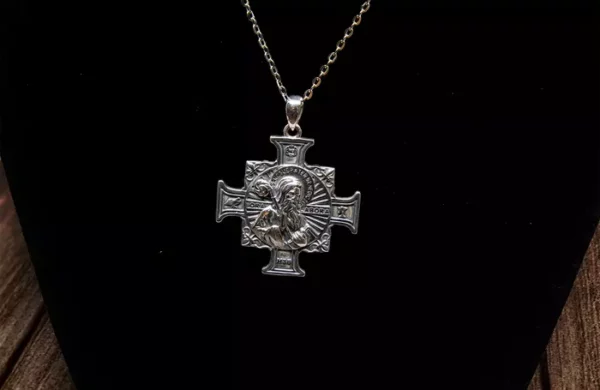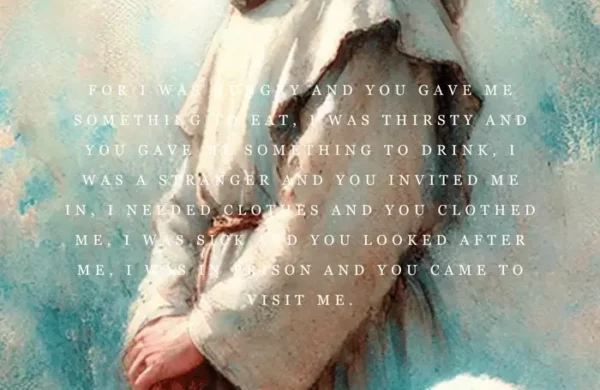
Our company aims to transform church worship by reviving high-quality, traditional vestments. Rejecting low-grade, mass-produced alternatives, we honor centuries of craftsmanship with detailed, meaningful designs. While we can’t serve every church, we strive for excellence and need your help to spread the word. Share our mission and support us in preserving the art of church vestments.
Like this:
Like Loading...

Reviving a century-old Roman fiddleback chasuble, this restoration project breathes new life into a hand-embroidered liturgical treasure. Featuring our Ivory Fairford fabric, the set includes a matching dalmatic, deacon stole, maniples, and regular stole in the traditional spade-end style.
Like this:
Like Loading...

The Parable of the Good Samaritan, found in Luke 10:25-37, tells the story of a man who is robbed and left for dead on the roadside. Both a priest and a Levite pass by without helping, but a Samaritan stops to assist him. The Samaritan tends to the man’s wounds, takes him to an inn, and pays for his care. Jesus concludes the parable by highlighting the Samaritan’s compassion and instructs his listeners to emulate his example by showing mercy to others. This parable teaches the importance of kindness and compassion toward everyone, regardless of differences, emphasizing the universal value of caring for those in need.
Like this:
Like Loading...

Explore the legacy of stained glass artisan F.X. Zettler, for his mastery of the Munich Style. From award-winning windows to technological innovations, Zettler’s influence extended globally, shaping the market for Catholic church windows. While rooted in tradition, his company’s contemporary projects reflect a departure from the Munich Style, exploring modernistic designs for diverse venues.
Like this:
Like Loading...

In John 10, Jesus presents Himself as the Good Shepherd, contrasting His life-giving mission with the destructive actions of false leaders. He emphasizes His deep commitment to His followers by laying down His life for them and highlights the intimate relationship between Him, His followers, and the Father. Jesus also expands His mission to include all believers, uniting them under His care.
Like this:
Like Loading...

Ecclesiastical Sewing offers classic church vestments for everyone. Whether you’re Lutheran, Catholic, or any denomination, we’ve got you covered. With handmade pieces and DIY supplies, we make beautifying worship spaces easy.
Like this:
Like Loading...

Saint Benedict of Nursia, born around 480 AD, made a big impact on Western history. During the fall of the Roman Empire, he created the Benedictine Rule—a guide for living a balanced life with prayer, work, and study. His Rule focused on stability and obedience as ways to find true freedom and spiritual growth. Saint Benedict’s teachings remind us of the importance of living with purpose and order.
Like this:
Like Loading...

The Sacred Heart symbolizes the profound love and compassion of Jesus Christ and gained popularity in the Middle Ages, especially through the visions of Saint Margaret Mary Alacoque in the 17th century. Alongside it are the Chaste Heart of Saint Joseph, representing purity and care for Jesus and Mary, and the Immaculate Heart of Mary, pierced by a sword to signify her sorrow and unwavering love. Together, these hearts embody the love, sacrifice, and purity central to Christian belief, offering insight into the spiritual and historical foundations of Christianity.
Like this:
Like Loading...

San Roque, also known as Saint Roch, was a French saint born around 1295 who dedicated his life to healing the sick during the plague. He is remembered for his miraculous healing powers, humble pilgrimages, and divine assistance from a dog when he fell ill. San Roque’s feast day on August 16th celebrates his legacy of compassion, faith, and service, reminding us to care for others, maintain resilience in the face of adversity, and selflessly serve our communities
Like this:
Like Loading...

We’re excited to share our beautiful new jewelry collection that helps you express your faith in style! Featuring shiny Cubic Zirconia stones in silver and gold, this collection includes popular pieces that sell out quickly. You’ll find elegant necklaces, pendants, and pins perfect for any occasion, including special gifts for brides and bridesmaids. Stay tuned for more amazing additions in our collection!
Like this:
Like Loading...

Jesus’ revolutionary command to love transformed religious teachings, promoting personal change and inclusive, selfless love. This agape love inspired societal change, influencing ethics and philanthropy. Philosophers and activists further developed this ethic, shaping societal norms toward love and justice.
Like this:
Like Loading...

The Saint Peter’s Throne in Vatican City’s Cathedral Basilica is a stunning piece of art made by Gian Lorenzo Bernini in the 17th century. It was commissioned by Pope Alexander VII and took over a decade to finish. The throne is made of gilded bronze and decorated with symbols like Saint Peter’s keys and the papal tiara. It’s a symbol of faith and artistic skill from the Baroque era. For more info, you can check out the Vatican’s website.
Like this:
Like Loading...

The IHC symbol, seen in the Book of Kells and St. Peter’s Basilica, is a significant emblem in Christianity. Its enduring appeal stems from its representation of Christ’s authority, echoed in biblical passages, and its connection to the reverence for Jesus’ name by early Church Fathers like St. Jerome. Adorning churches and artifacts, it symbolizes the central role of Christian worship and iconography.
Like this:
Like Loading...

Our collection is the perfect gift for someone special, especially for those important moments. Whether it’s a birthday, anniversary, or just because, these stunning pieces will surely be cherished. Treat yourself or surprise a loved one with a unique and meaningful piece from our Sacred Heart collection.
Like this:
Like Loading...

King Solomon, seeking wisdom during a difficult time, asked his advisor for help. The advisor suggested finding a magical ring that would bring balance to his emotions, making him happy when sad and thoughtful when happy. After a long search, a wise jeweler crafted the ring with the inscription “This too shall pass.” This phrase reminded Solomon of life’s transient nature, helping him maintain perspective and calm in all situations.
Like this:
Like Loading...
















You must be logged in to post a comment.